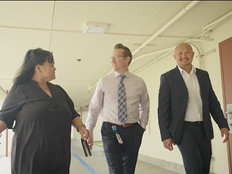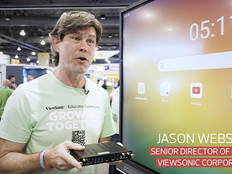Hardware
Watch & Learn: Immersive Technologies Help Students Learn More About Careers
Some educators may dismiss augmented and virtual reality in K–12 education, but not the career and technical education leaders at school districts in Virginia and North Carolina.
At Fairfax County Public Schools’ West Potomac Academy, students interested in healthcare careers are getting realistic simulations of what it’s like to work in the field. “We’re submersing students in scenarios that we can’t duplicate or recreate in the four walls of the classroom,” says Jennifer Alpers, an administrator at the school.
In North Carolina, Justin Wilkinson, director of CTE at Harnett County Schools, says his students are using VR headsets and simulation programs to learn about careers as electricians, welders and healthcare providers.
Both leaders say these technologies are crucial for bridging the gap between theory and hands-on experiences.
RELATED: Teaching emerging technologies empowers K–12 students.
Participants
Jennifer Alpers, Administrator, West Potomac Academy, Fairfax County Public Schools
Justin Wilkinson, CTE Director, Harnett County Schools
Lindsey Hardee, Harnett County Schools, School-to-Career Coordinator
Video Highlights
- Fairfax County Public School students learn about healthcare careers aboard a mobile, immersive learning center.
- Harnett County Schools also uses a vehicle outfitted with virtual reality gear to expose students in their rural community to careers.
- Both districts say partnering with schools and businesses strengthened the success of their CTE programs.






